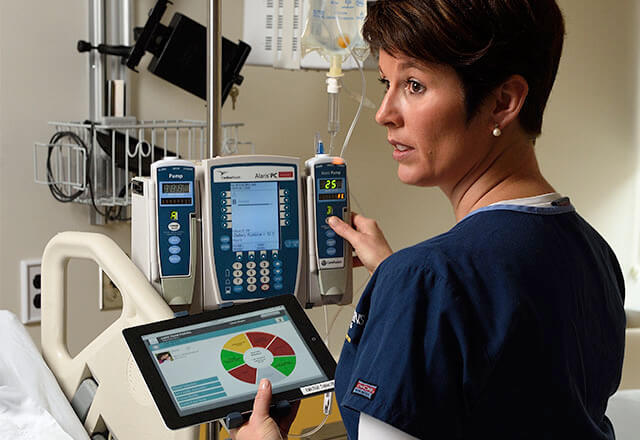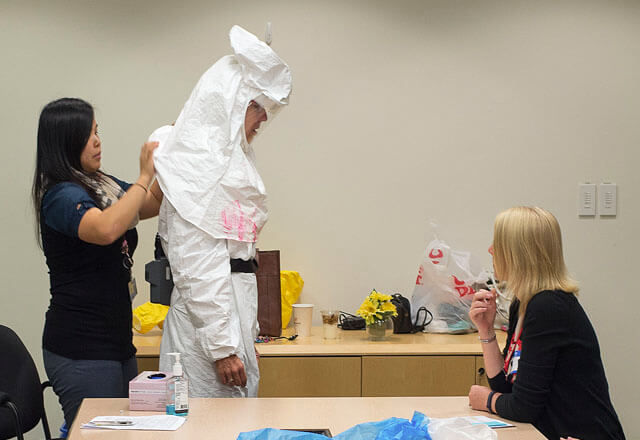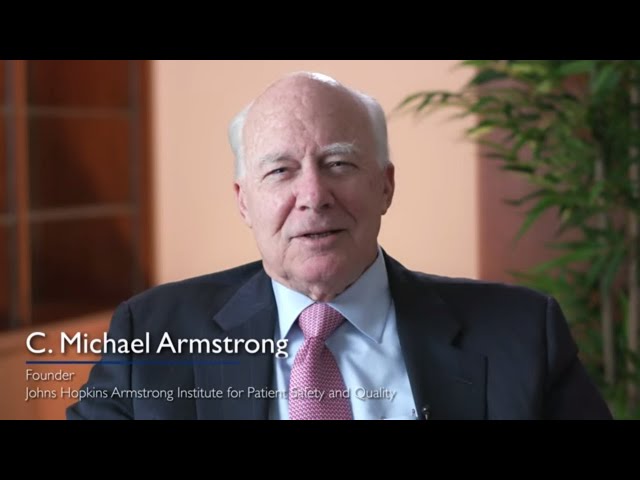The History of the Armstrong Institute
The Path to The Armstrong Institute for Patient Safety & Quality
-
1999 (Document) : To Err is Human
In 1999, the Institute of Medicine published a landmark report, To Err is Human , in which it identified patient safety as a significant nationwide problem. The authors estimated that at least 44,000—and perhaps as many as 98,000—Americans die in hospitals every year due to medical errors. The solution, stated the report, required focusing on fixing flawed care delivery systems and not blaming providers. Since that time, research has suggested that the number of deaths attributable to errors may be many times greater than the Institute of Medicine estimated.
-
2001 (Milestone)
How We Began
The impetus for transforming patient safety at Johns Hopkins began in 2001, when the institution reeled from two tragic deaths. First came the loss of 18-month-old Josie King, who died at Johns Hopkins Children’s Center due to avoidable medical errors. Then, a healthy 24-year-old research technician, Ellen Roche, died after volunteering to participate in a research study.
The aftermath inspired the culture change of accountability that advanced patient safety.
See our patient safety measures
Making safety the top priority
The effort began with three bold steps: Make safety the No. 1 priority of Johns Hopkins Medicine. Start every board of trustees meeting with a safety report instead of a financial review. And create a safety-focused Center for Innovation in Quality Patient Care, funded with $500,000 each from The Johns Hopkins Hospital, the Johns Hopkins University School of Medicine and The Johns Hopkins University.
-
2002-2003 (Document) : Creating new models of health care delivery.
Created in 2002, the Center for Innovation created new models of health care delivery that improved patient safety, quality and efficiency. Center experts developed resources, tools and training programs that engaged health care workers—from frontline staff to top leadership—to realize measurable advances in care delivery at The Johns Hopkins Hospital and at the Johns Hopkins Health System.
-
2004-2010 (Research) : Developed evidence-based patient safety and quality structures
Johns Hopkins began treating safety like a science, collecting data to find, test and deploy systemic improvements.
-
2011-2017 (Video) : C. Michael Armstrong makes a $10 million gift to create the Armstrong Institute
Created with a $10 million gift from C. Michael Armstrong , former chairman of the Johns Hopkins Medicine board of trustees, and his wife, S. Anne Armstrong, the institute’s goals include creating a culture of accountability and transparency to prevent medical errors, improve clinical outcomes and eliminate health care disparities.
-
2011-2018 (Document) : The Institute's First Director: Peter Pronovost, M.D.
From 2011-2018, pioneering safety expert, Peter Pronovost, M.D., headed the institute, bringing together two Hopkins groups already working on solutions—the Quality and Safety Research Group and the Center for Innovation in Quality Patient Care—as well as other safety and quality specialists from across Johns Hopkins.
-
2017 (Document) : Our Centers of Excellence
Armstrong Institute has three centers of excellence. The Center for Health and Human Factors works to reengineer health care processes to improve health care worker safety and patient safety, and to build in evidence-based care. The Center for Engagement and Patient-Centered Innovations works to improve patient outcomes through research projects around patient and family involvement while the Center for Diagnostic Excellence , created with a $5 million gift from Armstrong, aims to eliminate preventable harm from diagnostic error and reduce waste in diagnostic assessment.
-
2018 (Document) : Allen Kachalia, M.D., J.D. begins as Director of the Armstrong Institute
Allen Kachalia, M.D., J.D. joined Johns Hopkins Medicine in January 2018 as the senior vice president of patient safety and quality and the director of the Armstrong Institute for Patient Safety and Quality. As the director of the Johns Hopkins Armstrong Institute for Patient Safety and Quality, he directs the operations, academic, and scholarly efforts of the institute. -
Onwards (Milestone) : Setting the standard of excellence for healthcare systems
“We’re working hard on learning how to deliver uniform, high-quality care across our system,” says Allen Kachalia , director of the Armstrong Institute. “The attention that’s given to quality and safety speaks to how much Johns Hopkins prioritizes delivering the best possible care and getting it right every time.” The institute has about 225 faculty and staff members.





